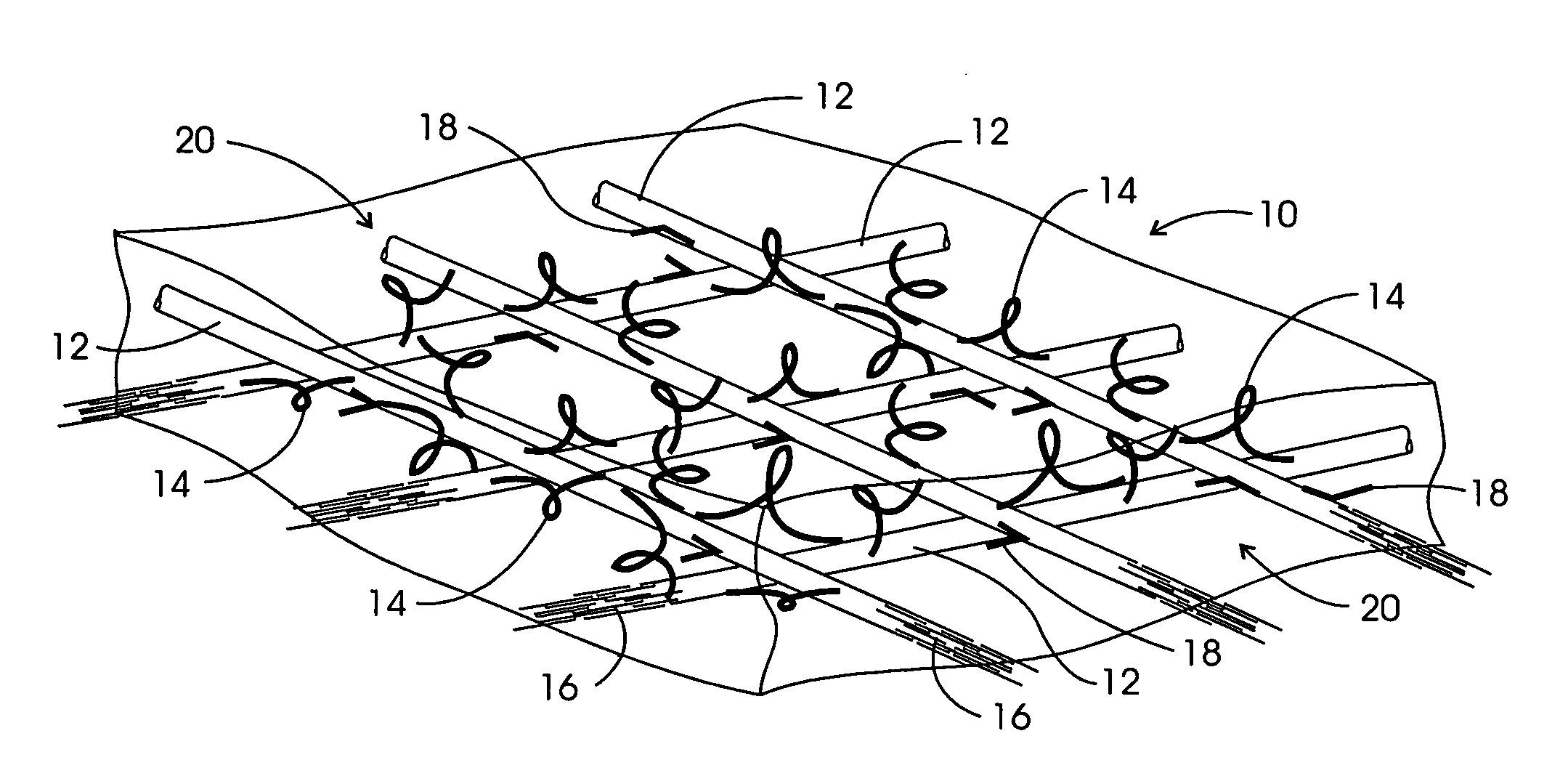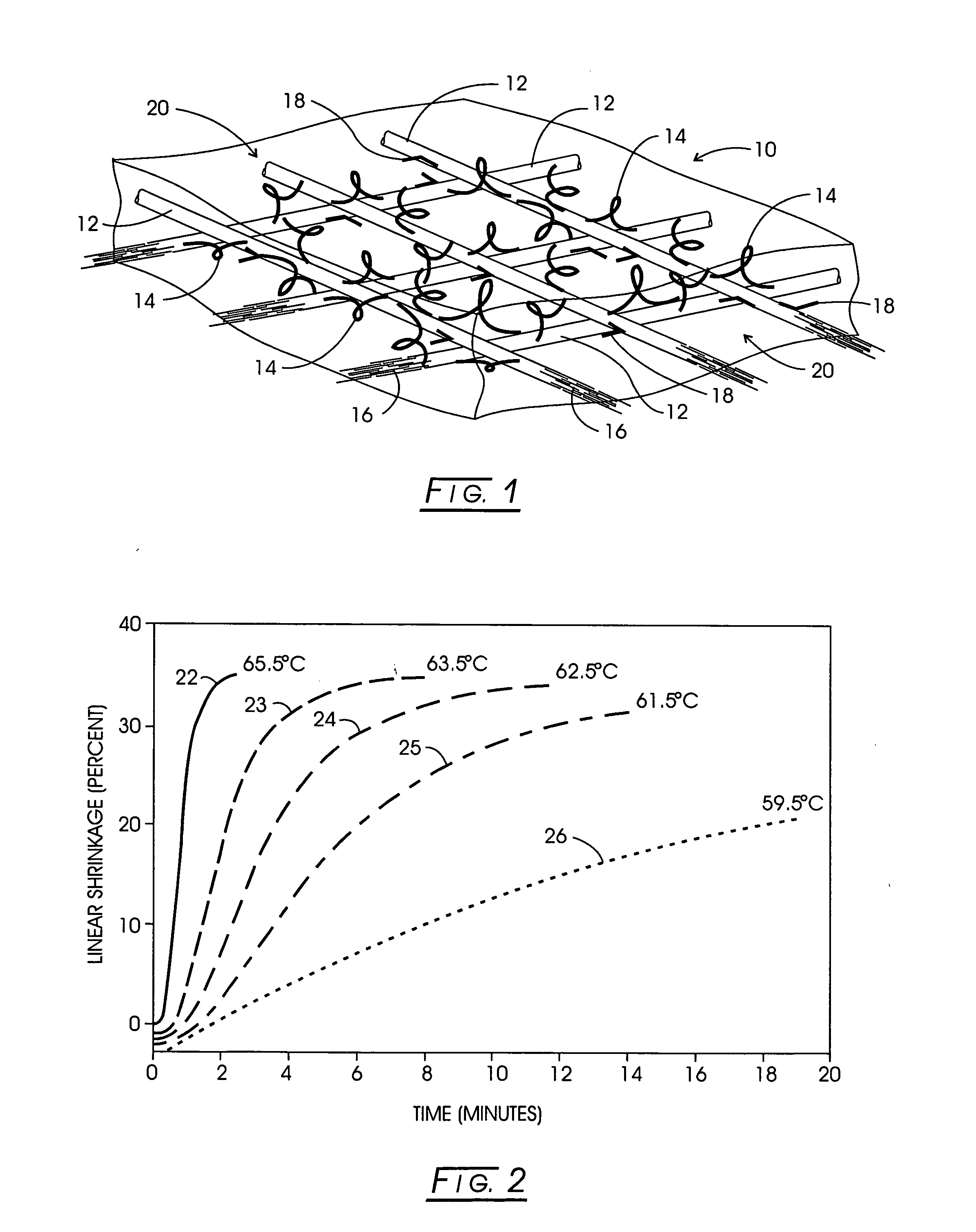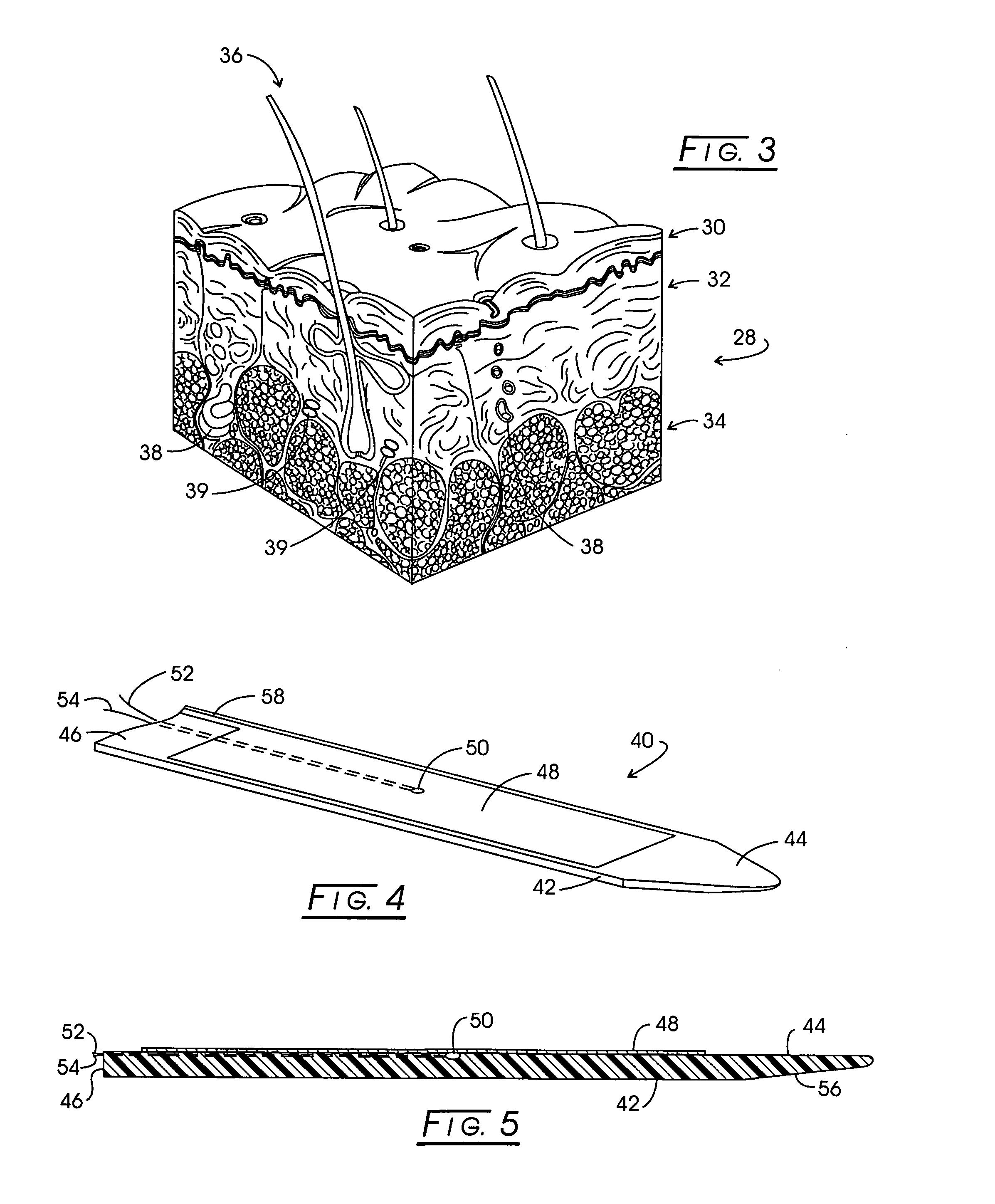Method and apparatus for carrying out the controlled heating of tissue in the region of dermis
- Summary
- Abstract
- Description
- Claims
- Application Information
AI Technical Summary
Benefits of technology
Problems solved by technology
Method used
Image
Examples
Embodiment Construction
[0152]The discourse to follow will reveal that the system, method and implants described were evolved over a sequence of animal (pig) experiments, both ex vivo and in vivo. In this regard, certain of the experiments and their results are described to, in effect, set forth a form of invention history giving an insight into the reasoning under which the embodiments developed.
[0153]The arrangement of the physical structure of the dermis is derived in large part from the structure of the extracellular matrix surrounding the cells of the dermis. The term extra cellular matrix refers collectively to those components of a tissue such as the dermis that lie outside the plasma membranes of living cells, and it comprises an interconnected system of insoluble protein fibers, cross-linking adhesive glycoproteins and soluble complexes of carbohydrates and carbohydrates covalently linked to proteins (e.g. proteoglycans). A basement membrane lies at the boundary of the dermis and epidermis, and is...
PUM
 Login to View More
Login to View More Abstract
Description
Claims
Application Information
 Login to View More
Login to View More - R&D
- Intellectual Property
- Life Sciences
- Materials
- Tech Scout
- Unparalleled Data Quality
- Higher Quality Content
- 60% Fewer Hallucinations
Browse by: Latest US Patents, China's latest patents, Technical Efficacy Thesaurus, Application Domain, Technology Topic, Popular Technical Reports.
© 2025 PatSnap. All rights reserved.Legal|Privacy policy|Modern Slavery Act Transparency Statement|Sitemap|About US| Contact US: help@patsnap.com



